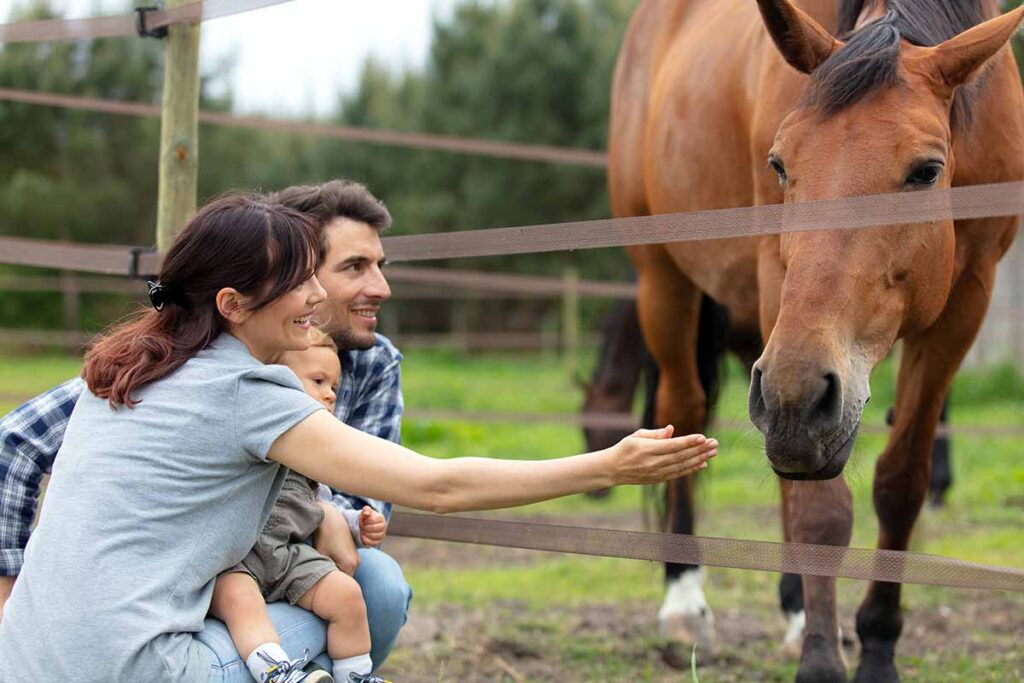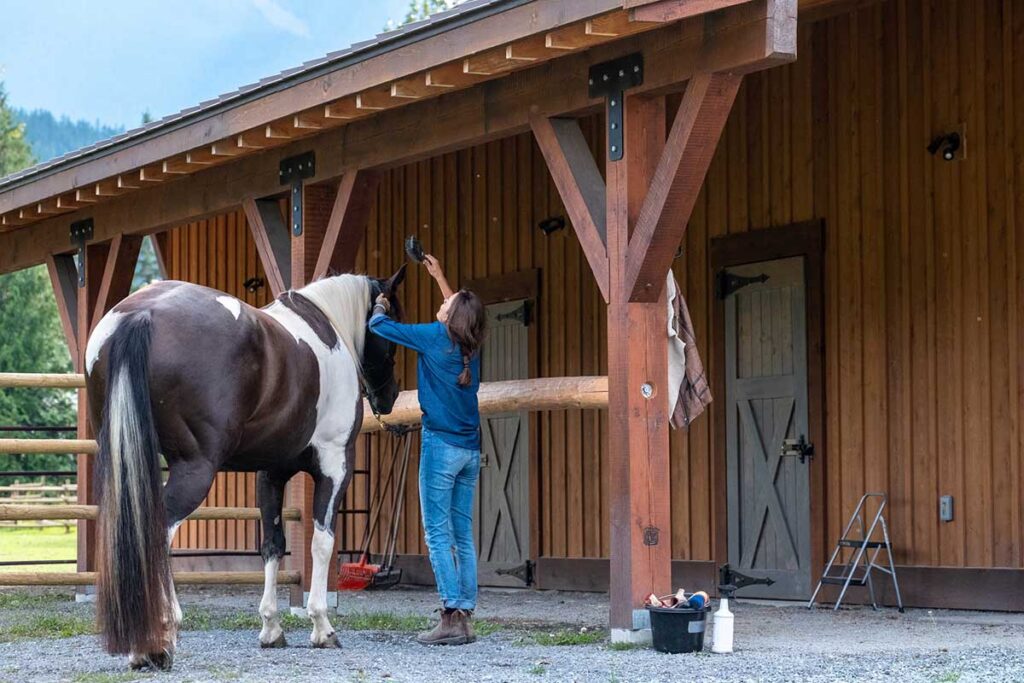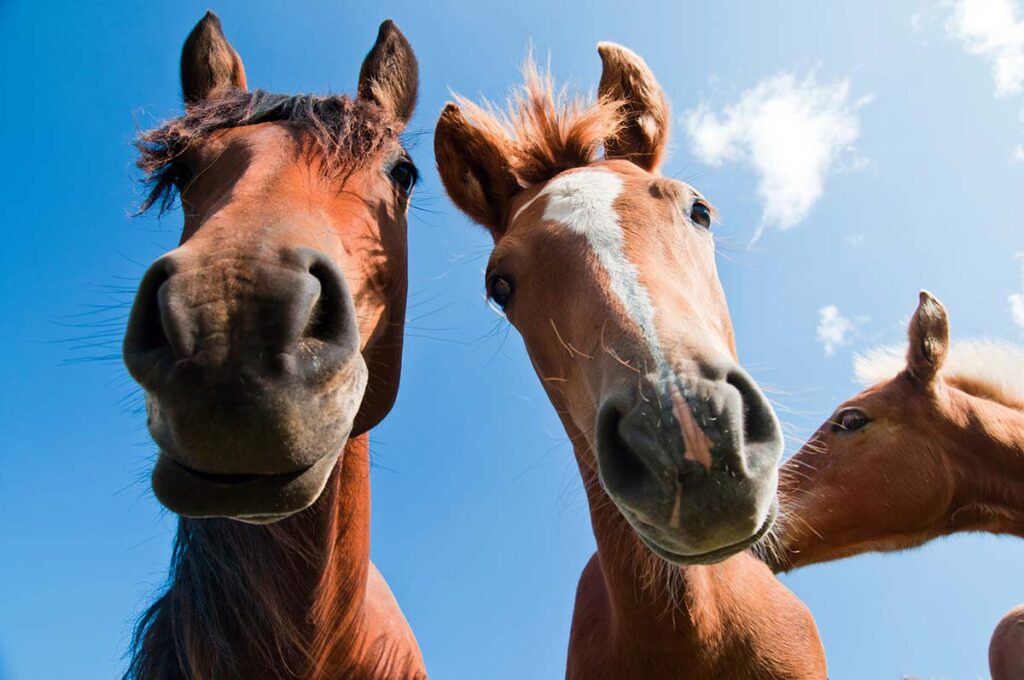A shiny coat and a long, flowing mane and tail – these are all aesthetically pleasing. But grooming is an essential part of your horse’s health as well as his physical appearance. Did you know the skin is the largest organ in your horse’s body? In fact, the skin of an average 1,000-pound horse is likely to weigh 60 pounds, or 6% of his body weight. This amazing organ stays healthy by constantly replacing itself to perform its vital role of protecting your horse’s body. Dead skin cells on the surface slough away and are replaced with new, young cells in a cycle that takes about 17 days.
Every time you break out the grooming kit is an opportunity to look your horse over for signs of skin concerns. His skin not only protects his sensitive underlying tissues but also has immune functions that help him ward off disease. This amazing organ also provides a mechanism to repel insects and detects outside stimuli, such as heat, cold, pain, and touch. Simply put, healthy skin means a healthy horse.
Regular Grooming Is Key
Perhaps nothing has more of an impact on your horse’s skin than a good, regular grooming routine—and that means much more than a “quick brush.” Daily and vigorous use of a curry comb:
- Removes dirt and grime.
- Encourages old, dead cells to slough away so they can be replaced
- Stimulates oil production.
And with daily grooming, you’ll identify any small wounds, crusts, or other abnormalities that might require attention before they become more serious problems.
To keep your horse’s skin healthy, curry his entire body (use a rubber mitt or soft-rubber curry comb for his face and legs), brush with a stiff brush to clear away debris, and finish with a soft brush or towel. If you have a white-pigmented horse, protect his sensitive skin with a sunscreen formulated for equines.
A word of caution: Don’t share brushes! Many skin diseases are caused by microorganisms that can easily be passed from horse to horse. To best protect your horse’s skin, keep grooming tools separate and clean, and disinfect them regularly.
Bath Time

Avoid frequent bathing with harsh shampoos that can strip your horse’s coat of its natural oils. Try a 2-in-1 shampoo and conditioner like this one from ShowSheen that is formulated to deep clean and condition. It cuts down on bathing time and is made for a horse’s sensitive skin.
Specialized shampoos might be recommended by your vet for certain skin issues. Rain rot and fungal issues are things to look for when grooming your horse, especially in rainy spring or fall.
Rain rot (or rain scald), common in warm, moist conditions, results in small bumps, crust-like scabs, and/or matted tufts of hair that pull off easily. A microorganism that behaves like both bacteria and fungi causes it.
Scratches (or mud fever, pastern dermatitis) develops in muddy conditions. Bacterial and/or fungal microorganisms invade the skin of your horse’s lower legs, causing inflammation, swelling, itching, and scaly scabs. Antimicrobial shampoo and ointment, plus giving the horse a break from muddy footing, are common remedies.
Be Alert for New Bumps
Sarcoids are the most commonly diagnosed tumor. Quarter Horses are frequently affected. Often appearing on the face, chest, groin, or legs, sarcoids can resemble proud flesh but take many other forms as well. Though not malignant, they can be fast-growing and disfiguring. You will need to consult your vet for the diagnosis and treatment of a sarcoid, which might require chemotherapy and/or surgery.
Melanomas can resemble black bumps but have varying appearances. They occur commonly on or near the underside of the tail or around the genitals, base of the ears, or eyelids. They’re most common in gray horses, especially those of Arabian or Thoroughbred blood (Quarter Horses are less affected). They may or may not be malignant; early detection can lead to successful treatment or surgery.
Don’t Forget the Feet
Take time to groom your horse’s legs and check for signs of swelling, bumps, or scratches. To inspect your horse’s legs, tie him up where he’s standing on a flat surface and bend down to touch his legs safely. Run your hand down each of his limbs, starting from the elbow all the way down to the coronary band. As you run your hand down, take note of any scrapes, swelling, or anything else unusual.
Clean out his hooves and be diligent in checking for signs of issues. Thrush will create a foul odor, and chips and cracks can lead to bigger problems. Chat with your farrier about your horse’s baseline hoof health, and check often for new issues.
This article is brought to you by ShowSheen.








